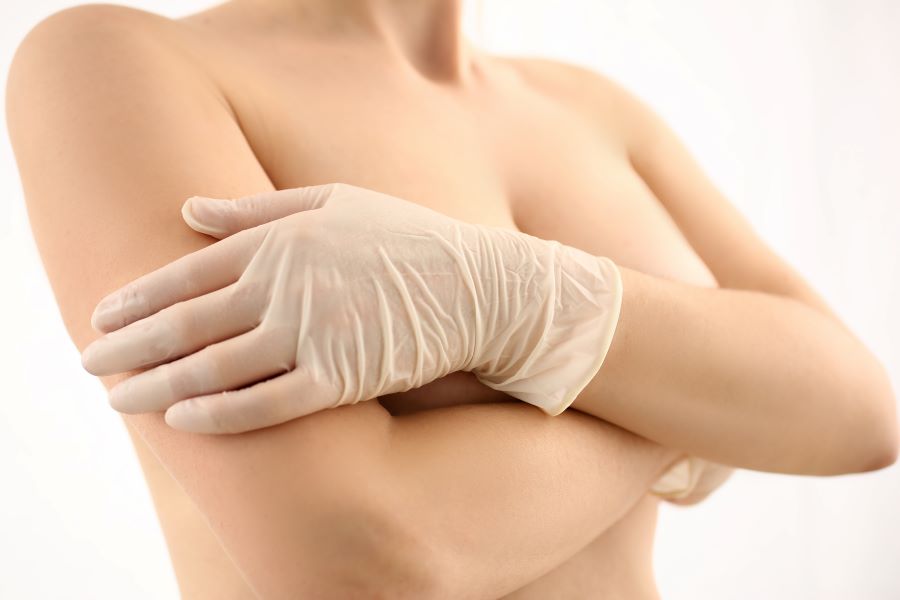Surgical techniques have improved over time making the breast augmentation recovery process much shorter. Breast augmentation surgery restores or increases the size of your breast using silicone gel implants, saline implants or fat transfer. This cosmetic surgery procedure has helped women enhance or restore their figures. Most patients resume their normal activities after a week regardless of the implant’s position. If you are considering breast augmentation surgery or have already had the procedure, here are recovery tips to help you.
What To Expect After The Breast Augmentation Surgery
How painful is breast augmentation recovery?
Recovery from breast augmentation surgery involves manageable pain. You’ll most likely need higher doses of medication during the first 2-3 post-operative days and feel discomfort on days 3-5, when the healing process may involve some inflammation around the incisions. During the first 2 or 5 days, your chest may be stiff and sore. A cold compress can help ease the sore; apply the cold compress for 20 minutes each hour on the swollen area. Do not put the cold compress directly on your skin; instead, place a thin, soft cloth or a paper towel over the swollen area. Feeling tenderness and aching is normal and the major discomfort goes away after one week.
Wear a Compression Bra
Wearing a medical compression bra is important to your healing process. A compression bra speeds up the healing process, thus allowing you to resume your normal activity soon. It minimizes swelling, provides support, improves blood circulation and helps to flush out harmful fluids. Using a garment to apply pressure helps the skin to fit better in its new shape.
What Activity is Safe DURING breast Augmentation Recovery?
Make sure you have enough rest; sleep on your back and ensure that it’s in an inclined position. You can do this in the initial days after the procedure. Elevating yourself enables maximum blood circulation which helps to reduce swelling. You can use wedge pillows or recliners to achieve elevation; wedge pillows are designed to provide proper alignment to your face, upper, mid and lower body areas.
You can start some light activities a day after your surgery; however, you should avoid the following activities in your daily routine:
- Lifting heavy objects
- Heavy pulling or pushing
- Reaching above your head
- Avoid activities such as swimming jogging, aerobics and weight lifting
- Avoid hot showers because they will worsen the swelling
Make sure you move your fingers and arms as often but avoid carrying children, groceries or pets within the first week.
How to Take Care of Your Wound?
After the surgery, you will have drains in your breast to drain blood or fluid from the incision site. You will leave the hospital wearing bandages to support and protect the breasts. Some surgeons arrange for Home Care for their patients and it should start the day after your surgery. The nurse will remove your drain after the amount of blood has decreased. The steri-strips should be removed after 7 days. Do not be alarmed if they start to peel before 7 days, remove the ones that are loose and throw them away.
Remember to replace the absorbent pad once or twice daily until drainage has stopped. Gauze, maxi pads or disposable nursing pads can be used over the incision. You can begin wearing a regular bra once the drainage has stopped, however, ensure that the bra is soft, clean and does not have under wires.
When Can You Take a Bath?
You can take a bath 3 days after your operation; it’s advisable to take a shower after your drains have been removed. After you have showered, pat the area dry using a clean, soft towel. Do not take a tub bath or swim before the wounds have healed completely.
How to Cope With Pain
It’s normal to have pain after the procedure but it goes away with time. Your plastic surgeon will prescribe some pain killers.
How Can You Tell If Your Implants Have a Problem?
Contact your surgeon immediately if you notice the following:
- Abnormal bleeding: This involves excessive bleeding from the wounds which soaks the pads or dressing
- Severe pain and nausea: This is pain that does not ease even with medication and nausea or vomiting that does not improve with anti-nausea medication
- Symptoms of infection: This includes increasing redness, pain, swelling, fever and yellowish, foul smelling fluid from the incision
Make sure you follow your surgeon’s instructions to ensure that you heal fast and eat right as some foods can worsen swelling.

